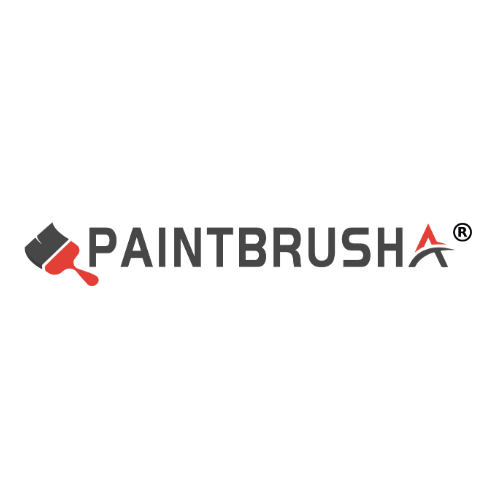Painting is a form of art that has been around for centuries. From early cave paintings to Renaissance masterpieces, artists have been using various tools to create their works of art. One of the essential tools for painting is the paintbrush. Paintbrushes come in different shapes, sizes, and materials and are used for various purposes. It is made of bristles attached to a handle. The bristles are used to apply paint to a surface. This article will explore what paintbrushes are used for and the available paintbrushes.
The History of Paintbrushes
Paintbrushes have been used for thousands of years, and their history can be traced back to ancient civilizations. The earliest known paintbrushes were made from natural materials such as animal hair, plant fibres, and even feathers. These brushes were used to apply natural pigments to cave walls, pottery, and other objects.
In ancient Egypt, paintbrushes were made from the hair of animals such as oxen, horses, and camels. The brushes were used to paint intricate hieroglyphics on the walls of temples and tombs. In China, paintbrushes from animal hair and bamboo created beautiful calligraphy and paintings.
During the Renaissance, artists began to use brushes made from hog bristle. These brushes were sturdier than their predecessors, allowing for more control and precision when painting. Many different paintbrushes are designed for specific painting techniques and styles.
Types of Paintbrushes
There are many different types of paintbrushes, each designed for a specific purpose. The following are some of the most common types of paintbrushes:
Flat Brushes
Flat brushes are perhaps the most versatile type of paintbrush. They have a flat edge that can be used to create both thin and thick lines. Flat brushes come in different sizes, ranging from small brushes used for details to large brushes used for broad strokes.
Round Brushes
Round brushes have a pointed tip that can create thin lines and thick lines when the brush is pressed down. Round brushes are ideal for creating details, such as highlights and shadows.
Filbert Brushes
Filbert brushes have a flat edge that is rounded at the tip. They are ideal for blending colours and creating soft edges. Filbert brushes are often used in portrait painting to create smooth skin tones.
Fan Brushes
Fan brushes have bristles spread out in the shape of a fan. They are used for creating texture and blending colours. Fan brushes are ideal for painting trees, clouds, and other natural elements.
Angle Brushes
Angle brushes have a slanted edge, ideal for creating precise lines and angles. They are often used for painting lettering and other details.
Mop Brushes
Mop brushes are large, soft brushes that blend colours and create soft edges. They are ideal for painting skies, clouds, and other soft elements.
Detail Brushes
Detail brushes are tiny ones that create fine details, such as eyelashes and whiskers. To create different details, they come in different shapes, such as pointed and angled.
Uses of Paintbrushes
Paintbrushes are used for various purposes, from creating fine art to home decor projects. The following are some of the most common uses of paintbrushes:
Fine Art
Paintbrushes are an essential tool for fine artists. They are used to create masterpieces in various mediums, including oil, acrylic, and watercolour. Artists use different paint
brushes to achieve different effects and styles. For example, a flat brush may be used for broad strokes, while a round brush may be used for fine details.
Home Decor
Paintbrushes are also used for home decor projects like painting walls, furniture, and decorative objects. For these projects, larger brushes are typically used to cover large areas quickly, while smaller brushes may be used for details.
Crafts
Paintbrushes are commonly used in various crafts, such as painting on wood, fabric, and paper. Different types of brushes are used for different materials and techniques. For example, a stencil brush may be used for stencilling, while a foam brush may apply paint to a surface.
Commercial Painting
Paintbrushes are used in commercial painting for touch-ups and minor repairs. For larger projects, spray guns are often used to apply paint more quickly and efficiently.
Education
Paintbrushes are essential for teaching painting techniques and art history in schools and universities. Students learn to use different brushes to achieve different effects and styles, mix colours, and create compositions.
Tips for using a paintbrush
There are a few things to remember when using a paintbrush. First, always ensure the bristles are clean and free of paint or debris. Second, always use a light touch when painting, especially near delicate areas like the eyes. Third, use short strokes when painting, and overlap each stroke slightly to avoid leaving any streaks. Finally, always paint in the same direction, either horizontally or vertically.
How to care for a paintbrush
One of the most important things to remember when caring for a paintbrush is to clean it properly after each use. Paint can harden and dry on the bristles, damaging the brush and making it difficult to clean in the future.
First, remove as much paint as possible to clean a paintbrush by wiping it off with a rag or paper towel. Then, soak the brush in warm, soapy water for a few minutes. Rinse it thoroughly, and reshape the bristles if necessary. Finally, let the brush air dry completely before storing it.
Conclusion
Paintbrushes are an essential tool for painters and artists of all levels. They come in many different shapes, sizes, and materials, each designed for specific painting techniques and styles. From creating fine art to home decor projects, paintbrushes are used for various purposes. Understanding the different types of paintbrushes and their uses can help artists choose the right tools for their projects and achieve the desired effects in their work.
